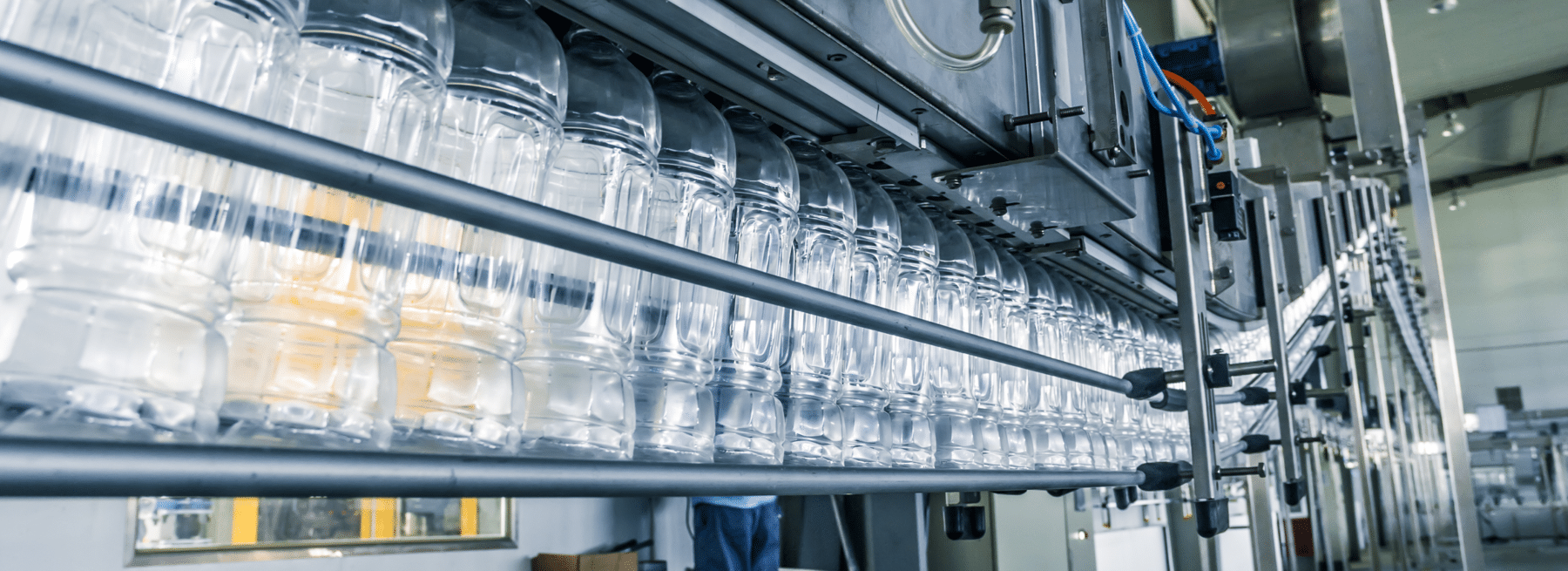Shopping for food and beverages is one of those things that almost everyone does. Humans can’t live without food and water. That said, almost everyone has noticed grocery and restaurant bills have gone up. That’s because inflation hit a 40-year high in December 2021 per NextAdvisor. This largely impacts freight and material costs. The soaring cost of food and beverages is forcing the food and beverage industry to make changes.
How Inflation Affects the Food and Beverage Industry
Inflation is changing customer purchasing behaviors and requiring the industry to pivot and adapt to supply chain problems. Between the labor shortage and higher prices, they must get creative and look for new ways to manage these. Even the Russian invasion of Ukraine has influenced North American businesses. Moreover, the invasion caused gas prices to rise steeply.
This also has an impact on food because much of the corn, wheat, and sunflower is imported from the region. As you know, a multitude of products contain corn syrup and cornstarch. Here are the three biggest ways inflation influences how the industry conducts business.
1. Changes Customer Spending
The Dallas Morning News reveals Ukraine is one of the world’s largest producers of wheat and corn. North America is importing about half as much as usual, which drives up prices. Although the U.S. has a surplus of corn and wheat, it won’t stop the prices from climbing.
Corn and soybean meal aren’t only consumed by humans. Chickens and cows depend on them too. Since they eat the higher-priced corn and soybeans, it creates a domino effect on the price of pork and chicken proteins. Hence, one of the biggest ways inflation hits the food and beverage industry is that it changes customer behaviors.
Inflation not only has changed food shopping habits but has also changed consumer’s spending habits. Almost 60% of the people responding to a poll by the Washington Post and George Mason University’s Schar School of Policy and Government say they’ve cut down on setting aside money for savings according to a Forbes article.
Also, 77% spend less on eating out and entertainment. Most think inflation will get worse in the next year. A whopping 30% believe inflation will get much worse. In anticipation of this, people will spend less.
To fight inflation, customers are switching brands, grocery stores, and restaurants as they seek more affordable options. It’s no surprise that they’re buying more of the store brands and generic items. Some restaurants try creative promotions such as offering more items for less. Clearly, this isn’t a strategy that would work for every business. Others opt to focus on customer retention through loyalty programs and perks.
2. Affects the Supply Chain
The precarious supply chain continues to be a problem after more than two years. This, in turn, touches supply and demand. A great example of this is the infant formula shortage. It all started with a recall of potentially defective formulas. As soon as the manufacturing facility recovered from the recall, they had to stop operations because of severe weather.
The hazardous weather conditions flooded the facility. Once again, the company needed to clean up and do testing to verify the facility was safe from potential contamination. In this scenario, the demand for baby formula shot up as families had to scramble to find formula or a safe substitute.
On top of all this, there’s a shortage of truck drivers. With not enough tractor-trailers picking up cargo, it resulted in a pile-up of cargo at manufacturing facilities. What can food and beverage facilities do about this? For one, they need more security to watch over the cargo and deliveries as organized crime rings resort to fictitious pickups to commit cargo theft.
Additionally, ports have been struggling with cargo not being picked up. This puts cargo at risk for theft. The irony is that the problematic supply chain drove the port to revise its operations to be more efficient. It worked as the Port of Los Angeles surpassed its previous cargo throughput record. The port processed more volume than any other port in the Western Hemisphere. Yet, they’re stuck with a stockpile with the truck driver shortage.
Compared to other industries, food and beverage is at a disadvantage because its products are at risk for spoilage. Some products have a limited shelf life. By the time a tractor-trailer picks up the cargo and transports it, the shelf life could be in danger or much shorter than the norm.
3. Pays for Higher Operating Costs
The industry is also dealing with a labor shortage in processing and packaging plants. The supply chain has increased the cost of replacement parts due to the lack of supplies. If any manufacturing equipment breaks, then the facility could be in trouble. Either they won’t be able to find replacement parts, or they’ll pay a higher price for them.
Tariffs have also altered the cost of doing business. Product shortages, labor shortages, and cargo sitting around all drive up the cost of operations. Some food and beverage companies have worked with this by offering fewer items for the same price.
Peopled noticed this around Halloween because the packages contained fewer pieces of candy and yet the price remained the same. Consumers paid the same for fewer items or fewer ounces. One brand’s standard container of yogurt has dropped from 5.3 ounces to 4.5 ounces.
Fast food restaurants serving items like chicken wings and breadsticks may have cut down the number they provide. If an order of wings initially contained eight, they cut it to six without changing the price. This tactic has a name: shrinkflation.
Why the Food and Beverage Industry Needs More Security
The message is clear that the food and beverage industry needs effective and proactive security. For one thing, a lot of external factors affect their production. If they can’t get ingredients due to costs or tariffs, then they can’t perform any manufacturing or processing. If they need replacement parts, they may not find them or will pay more for them. This is a sign that facilities can’t afford to have any parts stolen, therefore the need for security.
Organized crime rings are also targeting facilities and trucks for cargo theft because it brings in a lot of money. The U.S. Cargo Theft Report from Sensitech states the average loss value per incident of cargo theft during the third quarter of 2021 was $337,000.
Of course, the industry must follow stringent food safety rules. Savvy thieves are fully aware of the situation and look for lots of cargo in one place. They also like swiping food and beverages because they’re one of the hardest things to trace. All of these are a formula for a low-risk, high-reward situation in stealing cargo from food and beverage facilities.
These issues explain why security has become a high priority for the industry. A good way to enhance security is to create, implement, and adhere to food and beverage facility security procedures and systems. This will also increase safety. No single security technology or system can do it all. That’s why it’s crucial to have multiple layers of security to maximize security and safety.
Maximize Security with Remote Video Surveillance
There is one technology that comes with multiple layers of security and that’s video surveillance with remote monitoring. The service has the ability to monitor the entire food and beverage facility and its surroundings. The monitoring and recording of video can help identify food safety problems. This proactive technology can help prevent crime, increase safety, optimize facility productivity, and lower liability.
Here’s how remote video monitoring can add multiple layers of security. The first deterrent is the visibility of video cameras. Some intruders will see the cameras and opt to move to another facility without cameras. With more brazen thieves out there, they won’t all be deterred by the cameras.
Thus, the next deterrent is video analytics. Its programming analyzes all the videos for suspicious scenarios. When it locates a match, it alerts the trained monitoring operator who works in a location away from the facility. The next deterrent is the monitoring operator responding based on what’s happening. They may give an audio warning to the trespassers on an on-site speaker. Again, this stops some invaders but may not deter organized crime gangs.
If the suspects ignore the audio warning, then the trained monitoring operator can call the police. While the police are on their way, the monitoring operator can follow the suspects until the police arrive.
This technology gives you the proof you need to show what happened. Everything the video cameras see can be saved as recordings that can be searched. Look for a remote video surveillance service with video analytics integrated because it helps to ease the trained monitoring operator’s load.
This evidence can come in handy to help you with hard-to-win cases such as liability claims, injuries, and fraud. Besides, companies sometimes learn about a problem long after something happened. The recordings can provide the needed answers. As you compare video surveillance technology, ask the vendor how long they retain the video footage.
Security is essential at food and beverage facilities. Stealth Monitoring’s proactive remote video surveillance provides a vital service at a time when there are shortages and supply chain problems. The industry must remove as much risk as possible to avoid losing its inventory and assets.
To learn more, download the free guide Remote Video Monitoring: More Than Just Catching Criminals. If you want to learn more about video security, please contact us.

